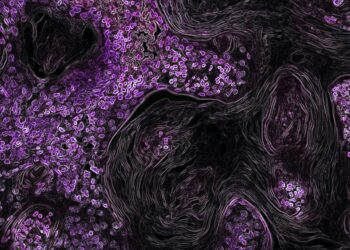In an era of aging populations and biotechnological breakthroughs, the question is no longer whether we can live longer—but how well we can live as we do.
As the U.S. population over 65 is projected to nearly double by 2060, public health leaders, clinicians, and everyday adults are shifting focus from lifespan to “healthspan”—the years of life spent in good health, free from chronic disease and cognitive decline. And in this redefinition of aging, strategies now span the full spectrum: from time-tested basics like exercise and diet, to advanced therapies involving peptides, hormones, and precision supplementation.
Foundations First: Nutrition, Movement, and Preventive Care
The base of any healthy aging model still rests on habits.
According to the World Health Organization, regular physical activity, balanced nutrition, and routine screenings can prevent or delay up to 80% of heart disease, stroke, and type 2 diabetes in older adults. Exercise, particularly resistance and balance training, maintains muscle mass and reduces fall risk. Cognitive function is preserved through sleep hygiene, social engagement, and mental stimulation.
But for many, even consistent healthy habits aren’t enough to counteract the physiological toll of aging. That’s where modern therapies begin to supplement—not replace—the basics.
Peptides: Precision Molecules, Big Impact
Peptides are short chains of amino acids that act as signaling molecules in the body. As we age, production of key peptides declines, contributing to loss of muscle tone, slower metabolism, and impaired immune function. Clinical use of peptides, such as BPC-157 for tissue repair or CJC-1295 for growth hormone support, is gaining traction for its targeted action and lower side-effect profiles.
Studies published in Frontiers in Aging and Molecules suggest peptides can enhance mitochondrial health, improve recovery, and even promote neurogenesis. While many are still investigational, their safety and specificity are attracting attention from functional medicine providers and biohacking communities alike.
Hormones: Beyond Rejuvenation to Regulation
Hormone optimization is also reshaping how we think about aging. Declines in testosterone, estrogen, progesterone, and DHEA are linked to reduced energy, libido, bone density, and mood regulation. Bioidentical hormone replacement therapy (BHRT) seeks to restore these hormones to physiological—not supra-physiological—levels.
Research from the Endocrine Society and Mayo Clinic Proceedings shows that when managed carefully, hormone therapy can reduce risk of osteoporosis and cardiovascular decline, particularly when initiated in the early stages of menopause or andropause.
However, hormone therapy is not without controversy. Risks of clotting, cancer, and metabolic dysregulation must be weighed on a case-by-case basis. The future lies in personalized protocols guided by biomarkers, genomics, and frequent reassessment.
Supplements: From Baseline Support to Biohacking Tools
The global market for longevity supplements—projected to surpass $60 billion by 2030—is driven by growing interest in compounds like NAD+, CoQ10, omega-3s, magnesium threonate, and adaptogens such as ashwagandha or rhodiola.
Of particular interest is nicotinamide mononucleotide (NMN), a precursor to NAD+ which supports cellular energy and DNA repair. Preliminary animal studies and human trials show promise in slowing aspects of biological aging. Similarly, magnesium threonate has gained attention for its role in cognitive resilience among older adults.
But supplement quality and efficacy vary wildly. Experts recommend third-party testing and consultation with clinicians trained in functional medicine to avoid over-supplementation or interactions with medications.
The Second and Third Order Effects of the Longevity Movement
The shift toward healthy aging isn’t just clinical—it’s cultural and economic.
Clinically, more providers are embracing an integrative model, blending conventional care with advanced diagnostics and lifestyle coaching. Economically, a longevity-focused health system could ease long-term Medicare burdens by delaying the onset of chronic disease.
Culturally, however, there is a risk: conflating healthy aging with elite optimization. The cost of peptide therapy, BHRT, and high-end supplements can run into the thousands per year—pricing out the very populations most at risk for aging-related decline.
This raises urgent questions of equity. Can healthy aging be democratized? Will public insurance systems ever reimburse therapies still labeled “experimental”? And are we shifting from a culture that fears aging to one that fears aging without enhancement?
Conclusion: A More Empowered Aging
Healthy aging is no longer a passive process—it’s a strategic, evidence-informed pursuit. From movement and meals to molecules and mitochondria, today’s adults have unprecedented tools to extend vitality well into their 70s, 80s, and beyond.
But the future must be as inclusive as it is innovative. Science can light the path, but public policy, clinical humility, and health equity must pave the way.
After all, the goal is not just to add years to life—but life to years.















